Viewpoint: Ortega's Nicaragua crisis evokes memories of past
- Published
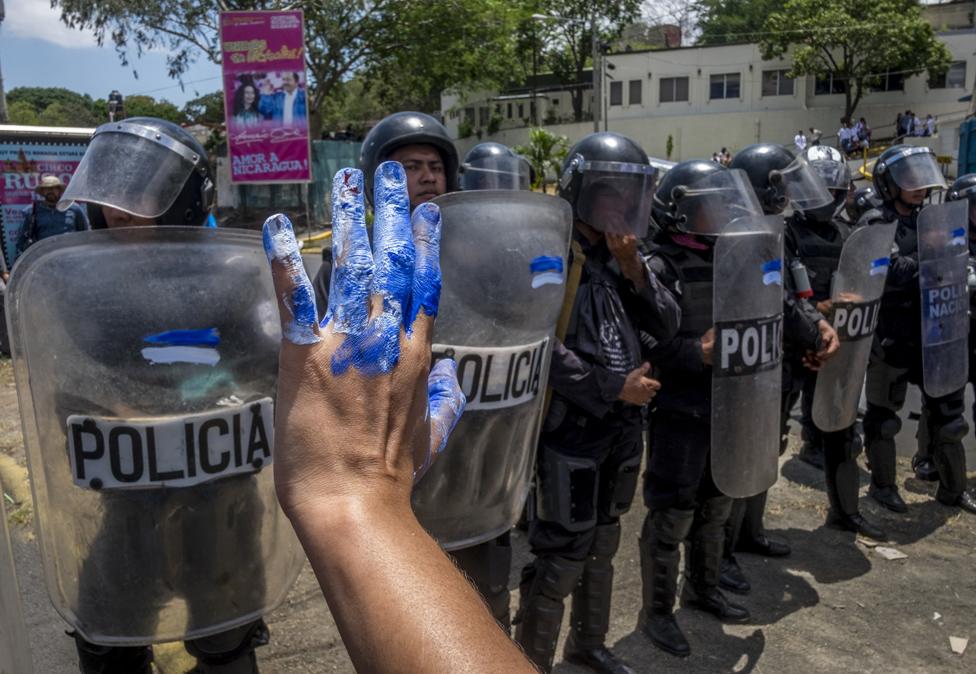
The blue and white colours of the Nicaraguan flag are being used by protesters to show their opposition to the government.
Javier Bauluz is a Pulitzer Prize-winning Spanish photojournalist who has been reporting on the recent wave of protests in Nicaragua in which hundreds of people have been killed. He argues that there are parallels between the current crisis and Nicaragua's armed conflict of the 1980s, which he also covered.
"How did we not realise that they were becoming monsters? How did we let them get away with so much?" an old woman asked me, crying, at an anti-government demonstration in the Nicaraguan capital, Managua, at the end of April.
The upset woman was a former member of the Sandinista rebel group, which successfully rose up against President Anastasio Somoza in 1979, thereby putting an end to more than 40 years of bloody rule by his family.
Now, four decades on from the overthrow of Somoza, she was taking to the streets against the government of Daniel Ortega, himself a former rebel and Sandinista leader.
After winning four presidential elections, Mr Ortega has been in power for more than 16 of the 39 years since Somoza was ousted.
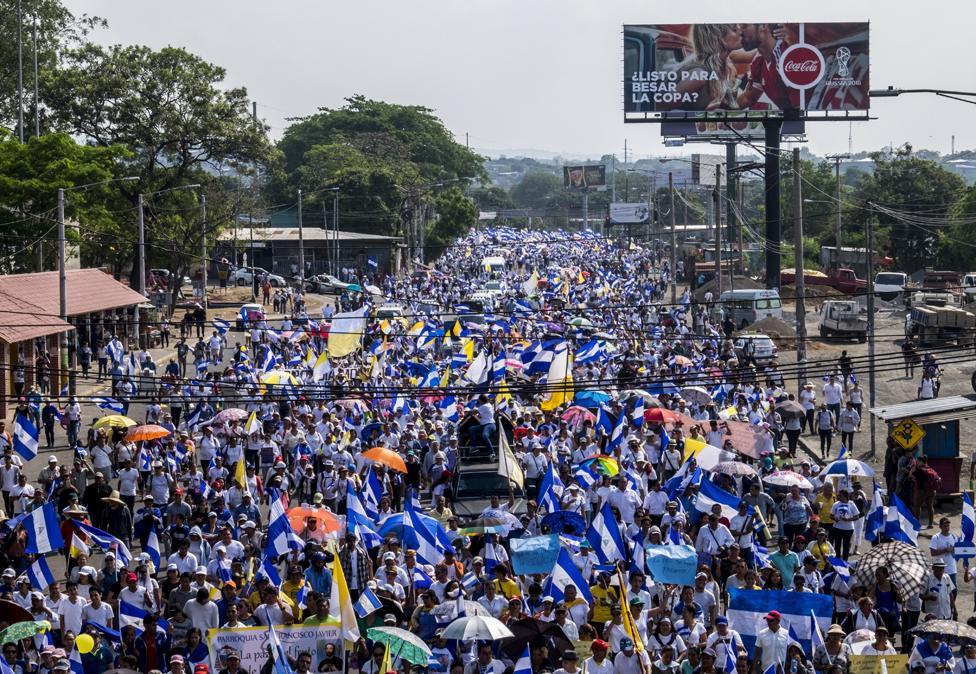
Anti-government marches started in April following plans for a reform of the social security system.
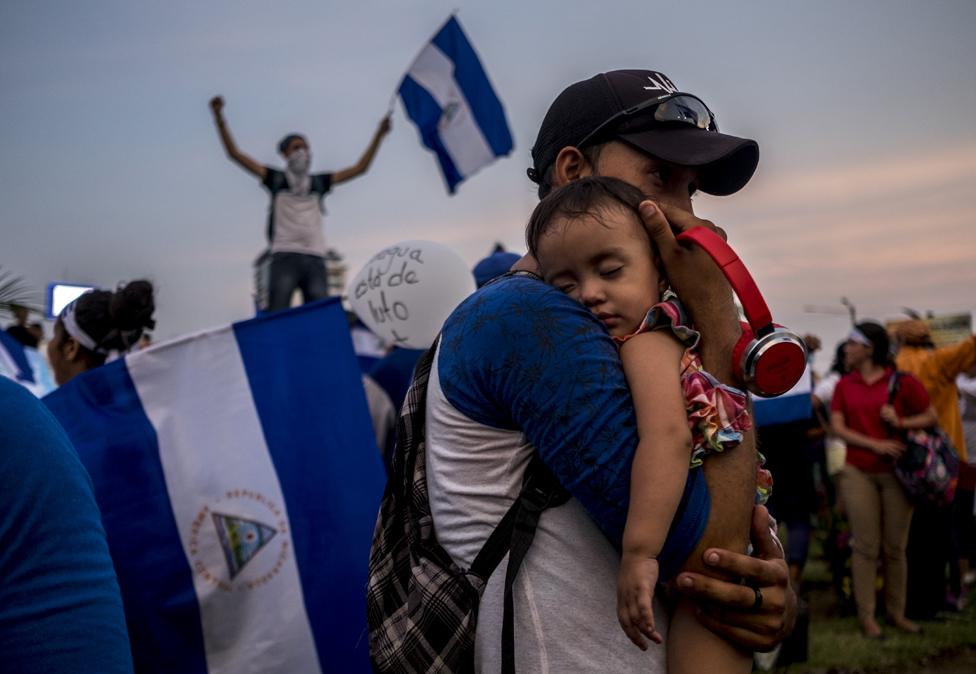
The protests against the changes - which were shelved - quickly turned into wider calls for President Daniel Ortega to step down.
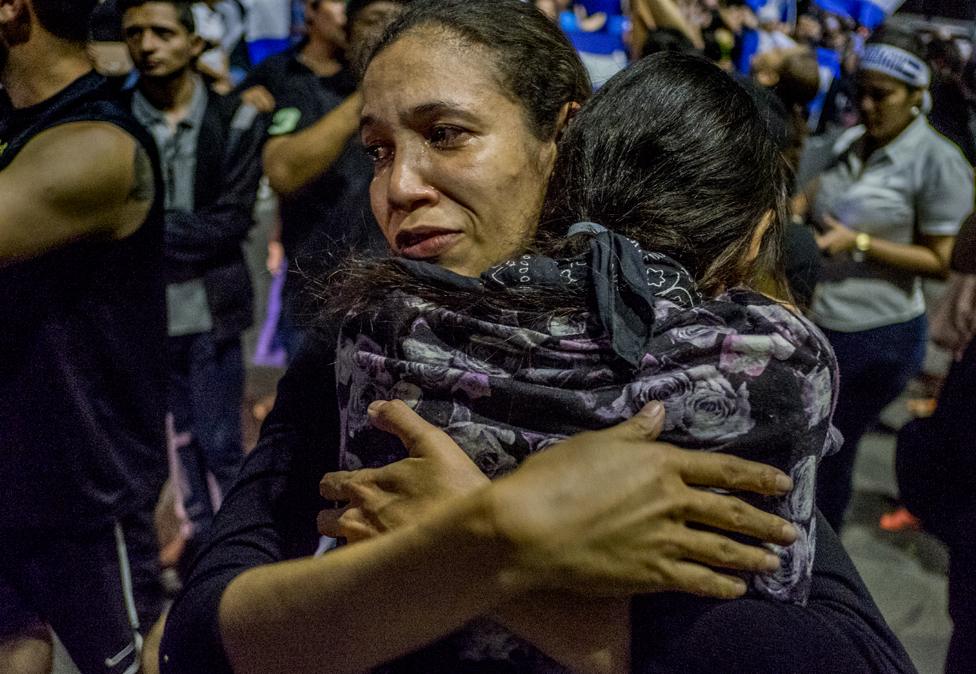
More and more people took to the streets after Nicaraguan police cracked down on the protest. Here, a mother and daughter can be seen hugging after one of the daughter's classmates, 15-year-old Álvaro Conrado, died after being hit in the neck by a police bullet while he delivered water to protesting students in Managua.
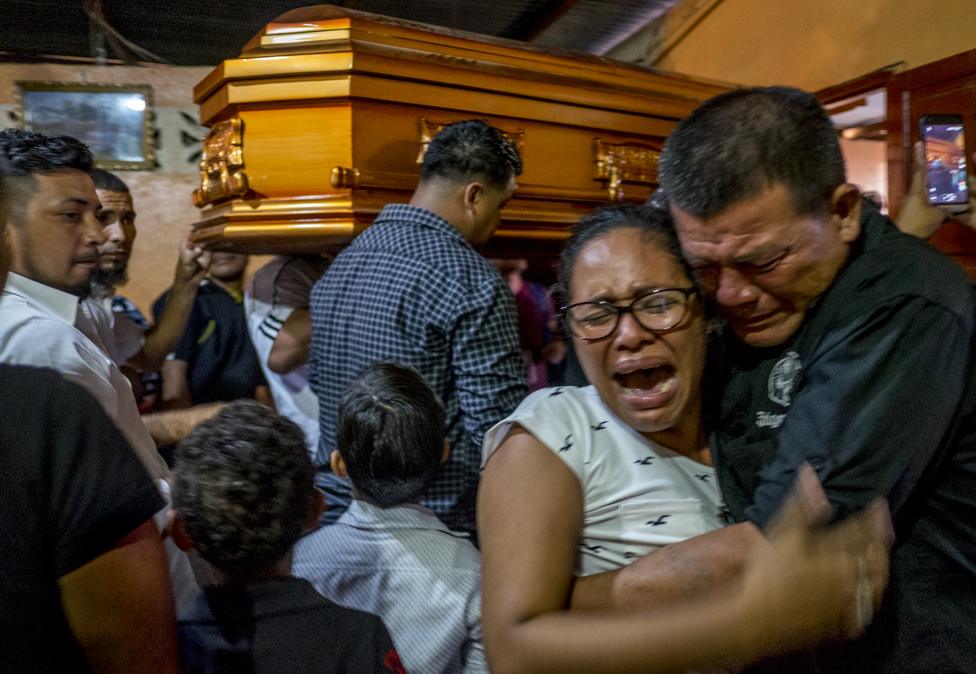
One of those shot during an anti-government demonstration on 20 April was 35-year-old Nelson Téllez. He died of his wounds two weeks later. His grandmother was disconsolate.
When the crying old woman said she regretted "letting them get away with", she was talking about the repression she saw coming from Mr Ortega's administration after the anti-government protests began on 18 April.
When I landed in Managua on the fifth day of protests, the number of people killed stood at 27, according to figures from the Nicaraguan Association for Human Rights (ANPDH). According to that same organisation, that number had gone up to 448 by 26 July.
New weapons
A veteran of the fight against Somoza, Mr Ortega has failed to realise that there are new arms available to those fighting today's battles.
The internet and social media have become both tools and weapons for those demonstrating against President Ortega.
They are using them to organise protests and to document human rights violations carried out by his government.
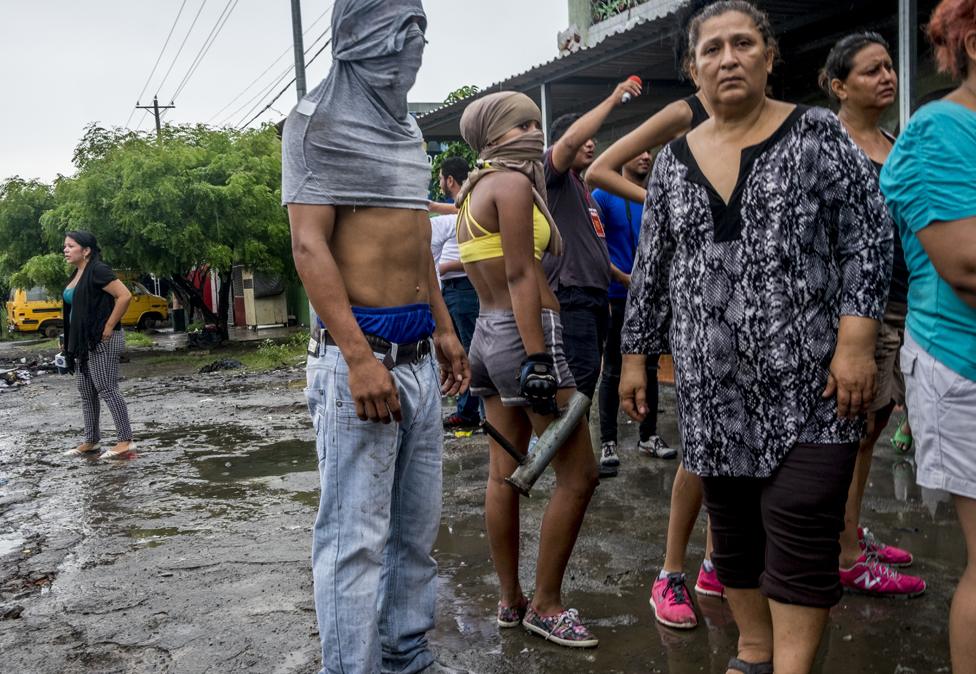
Social media means that news of cases such as that of the Pavón family spread quickly. Six members of the family - including five-month old Matías and a two-year-old Daryelis and their parents - died when their home burned down with them inside. Neighbours say paramilitaries set fire to it after Mr Pavón refused them access to his roof, which they wanted to use to as a vantage point to fire on protesters.
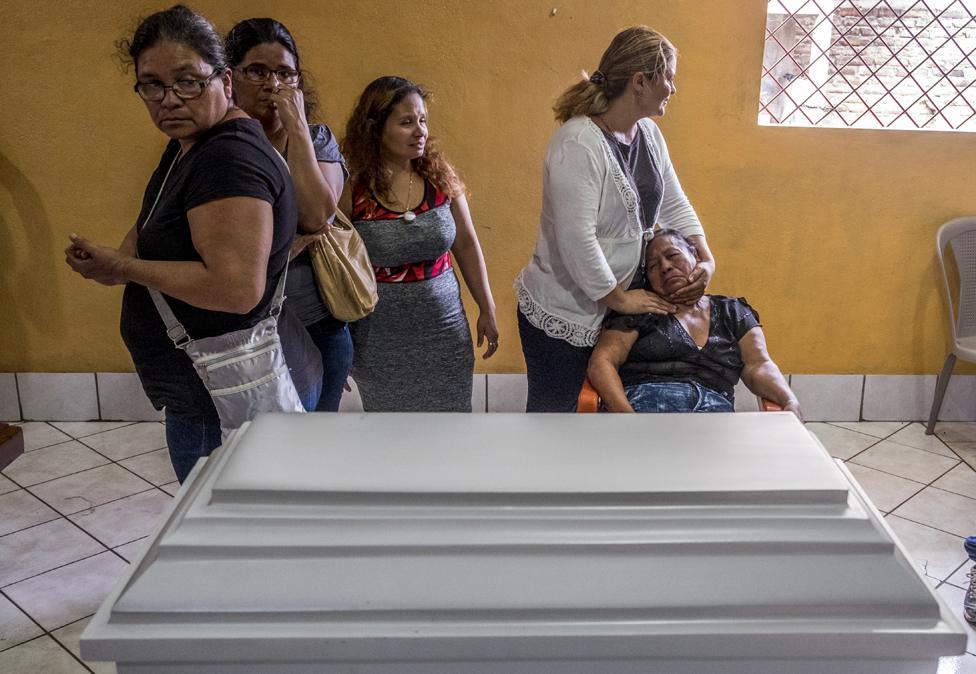
Relatives and friends of the family gathered for the funeral of five-month-old Matías Pavón, with some of them breaking down.
I think that Mr Ortega's thinking is stuck in the 1980s. He does not realise that having control of a large part of the traditional media, mostly owned by his sons, is no longer enough to control the flow of information.
But there are things that remind me of what I experienced in Nicaragua of the 1980s: the strength, courage and determination, which I have seen among the young and those not so young (among those taking to the streets are also mothers, fathers and grandparents).
These days, medical students are detained for treating peaceful protesters who do not have anywhere else to turn after being banned from seeking help in hospitals.
These doctors and aspiring doctors have to act clandestinely.
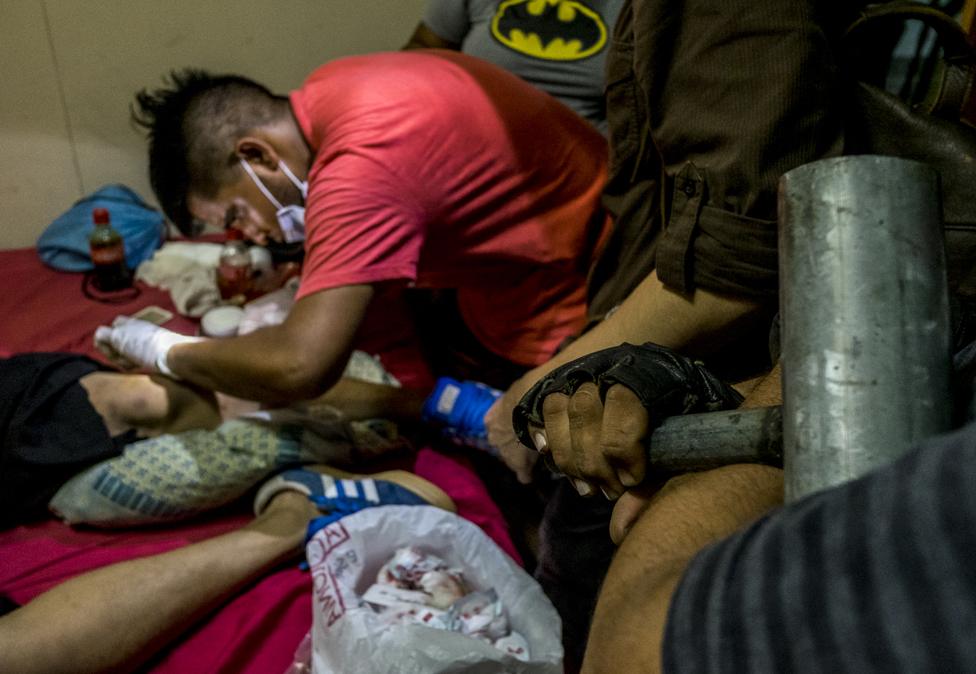
Volunteer paramedics have been treating those wounded in the protests clandestinely.
That reminds me of 1986 and 1987 when medical and other students in Managua would volunteer to harvest coffee in the north of the country.
At that time, Daniel Ortega was in his first term in office and was fighting against the anti-Sandinista rebels, who emerged after Somoza was ousted.
Coffee was practically Nicaragua's only source of income during the war against the Contra rebels.
The Contras, on the other hand, enjoyed the backing of the US government to the tune of $100m, after President Ronald Reagan had labelled the Sandinista government a "Communist regime" and a "terrorist" state.
Coffee and rifles
The young peaceful protesters of today remind me of those students whom I met in the coffee plantations, carrying AK-47 rifles in one hand and baskets full of coffee beans in the other.
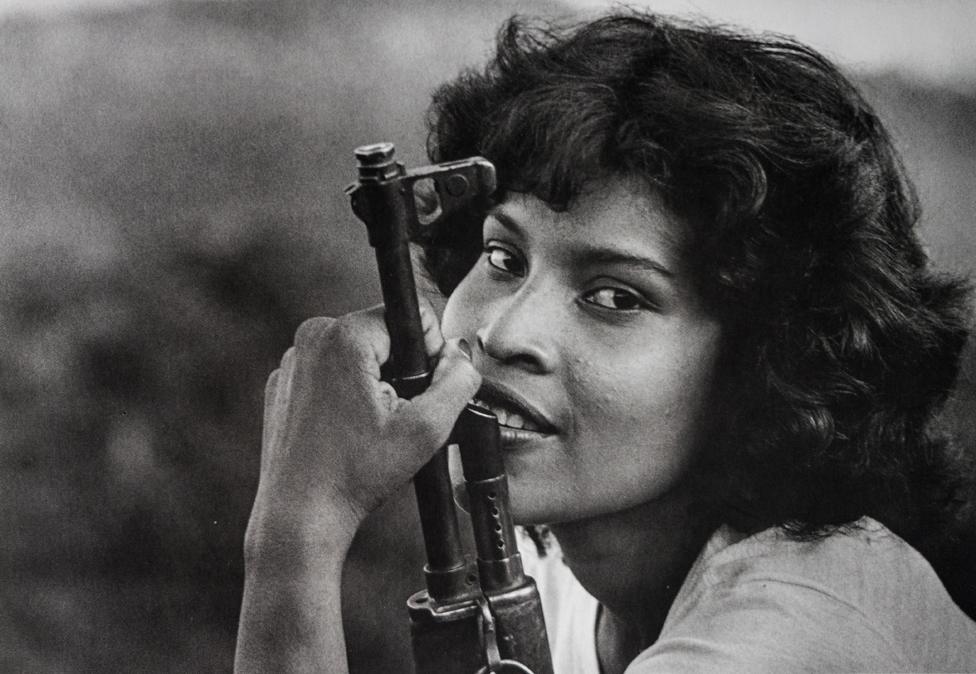
In the 1980s, Sandinista students picked up rifles and helped with the coffee harvest.
The rifles were essential as the area came under constant attack by the Contras.
One medical student, who went by the name of Nadia, always got up early in the mornings to lead the group to where they would harvest that day.
With her rifle slung across her shoulder she would go first, knowingly running the risk of treading on one of the many mines that littered the countryside.
That courage and determination which I witnessed in the 1980s and that clever Nicaraguan sense of humour and joy of life which I admire so much, I have come across again at today's barricades - even when the bullets were flying over our heads.

Masked youth holding homemade mortars take cover as police open fire at the barricade they are hiding behind.
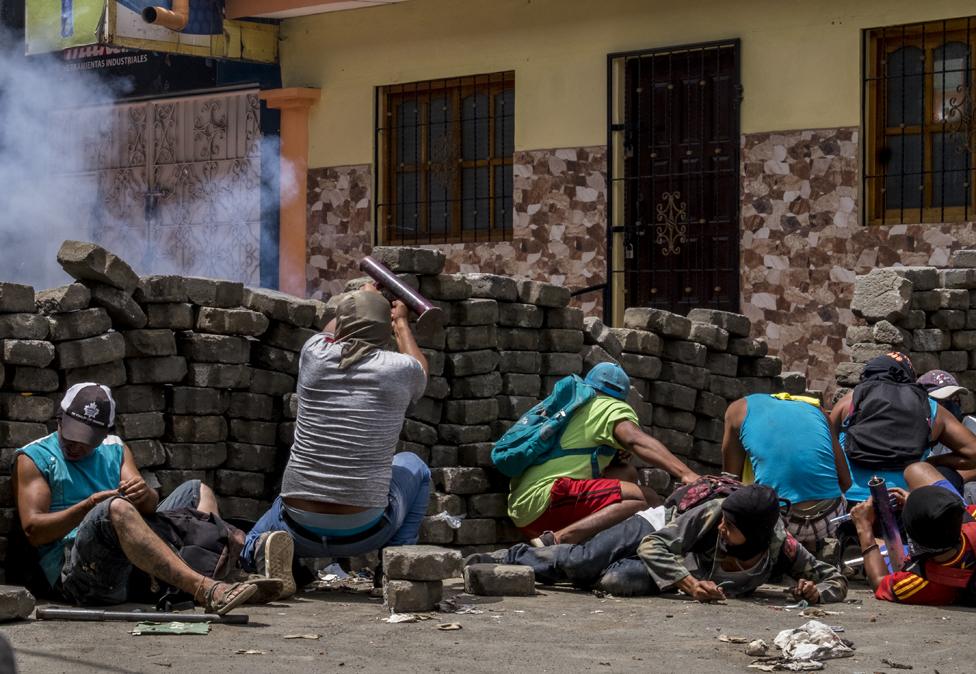
The protests were not restricted to the capital, Managua. The city of Masaya became a hotspot of the protests when its residents built hundreds of barricades to prevent pro-government from entering.
They have conquered fear, just like those students did in the 80s.
'One way or another'
The phrase that I have heard over and over again here in Nicaragua is: "They're going, one way or another".
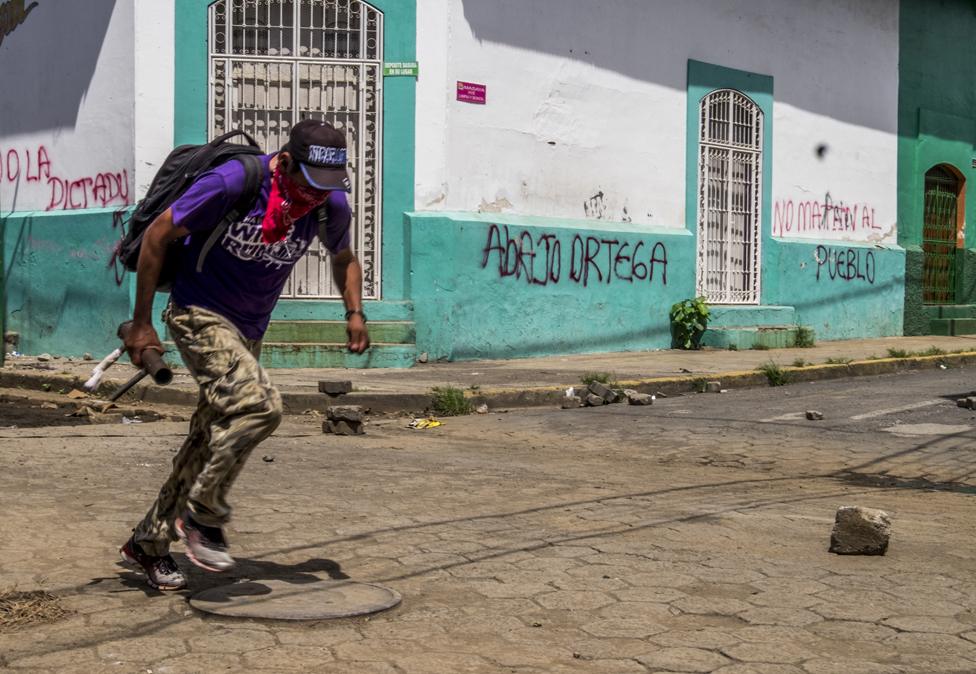
Graffiti in the protest hotspot of Masaya reads "Down with Ortega" and "Don't kill the people".
It refers to President Ortega and his wife Rosario Murillo, who is also the country's vice-president, and the protesters' aim to kick them out of office, if not the country.
What remains to be seen is how long the couple will take to leave and how much more blood has to be shed before they do.
President Ortega blames everything on the protesters and denies any responsibility. He has even gone as far as flatly denying the existence of pro-government paramilitary groups, when there are hundreds of videos and eyewitness reports which attest to their actions.
He is committing the same mistake he did when he lost the 1990 presidential election by underestimating the strength of feeling among ordinary Nicaraguans.
During that campaign, which I covered, everything had at first pointed to an Ortega win, as crowds would gather to cheer him and his vice-presidential candidate, Sergio Ramírez (who has since turned into a staunch opponent of Mr Ortega).
But Mr Ortega's decision to keep military service obligatory resulted in thousands of mothers, who did not want to see their sons risk their lives, voting against the Sandinista leader.
From Sandinistas to anti-Orteguistas
Today, you can find all kind of people at the protests, rich, poor, leftists, rightists, old, young, students and workers.
Many of those manning the barricades are Sandinistas who believe that Daniel Ortega has betrayed the revolution and its ideals.
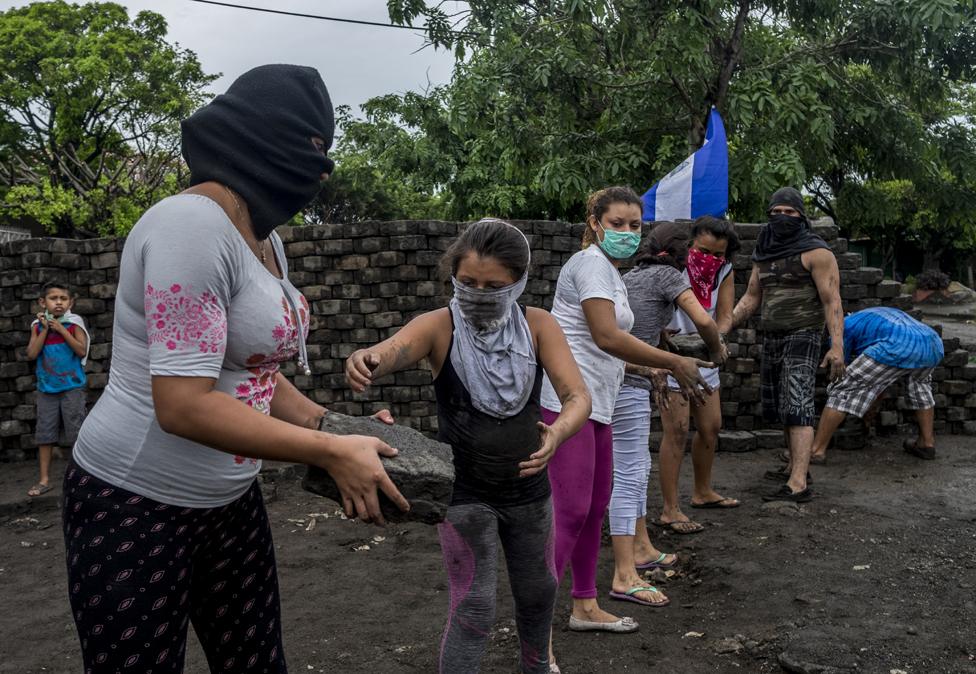
Women and girls have been building barricades in neighbourhoods targeted by paramilitaries.
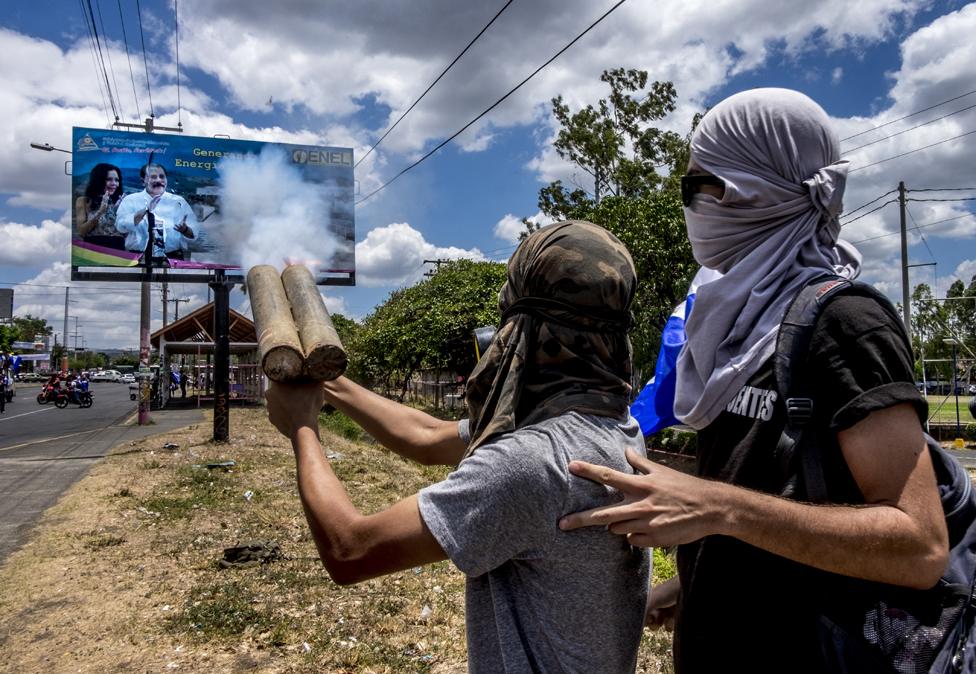
Much of the anger among the protesters is directed at President Ortega and his wife and vice-president, Rosario Murillo.
It is not unusual to meet people who fought Somoza and the Contras at the anti-government marches. Many are there with their children and grandchildren.
They draw a clear distinction between those who support the present government - whom they call Orteguistas after the president - and themselves, arguing that they are the ones who are upholding the ideals of the Sandinista revolution and the 20th-Century general, Augusto Sandino, from whom they drew inspiration and their name.
Like the Sandinistas who fought Somoza in the the 70s and the Contras in the 80s, those fighting for their basic human rights today are paying a high price for their determination and perseverance.
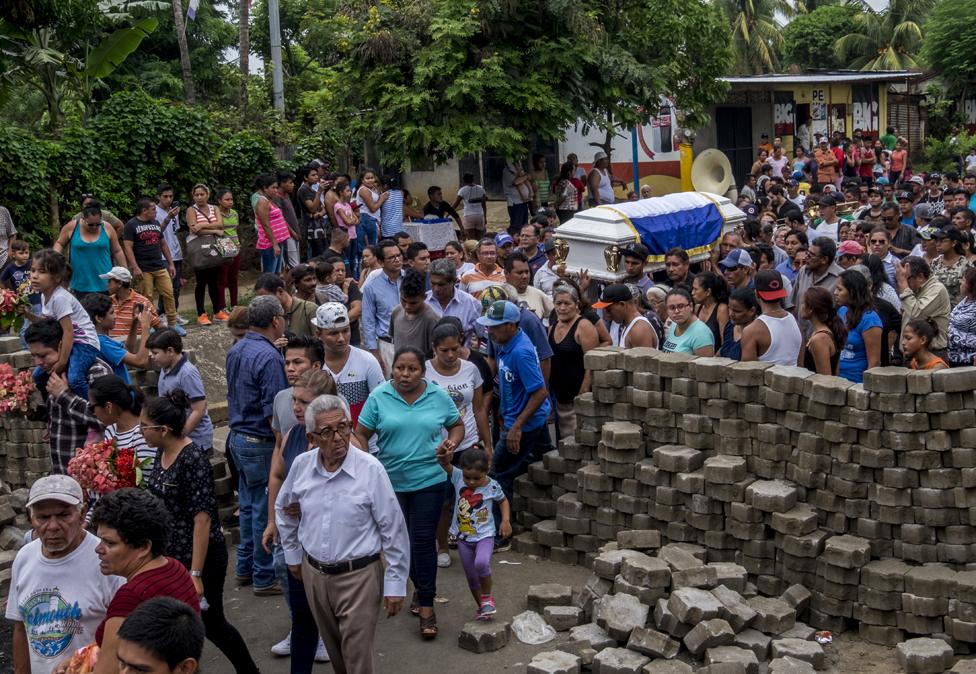
Funerals of people killed in the anti-government demonstrations have become common sights.
But they are not deterred and have even adopted the battle cry of Sandinista rebel Leonel Rugama, who when he was surrounded by Somoza's troops shouted: "Let your mother surrender!"
While looking for the home of one of those killed in the recent protests to report on his funeral, I found myself remembering Nadia, the young student who walked among the coffee plants, ready to fight with her rifle, or step on to a landmine, all to defend her ideals of justice and liberty.
"Which side of the barricade would she be on now?" I asked myself.
All photos by Javier Bauluz subject to copyright.
- Published26 August 2018
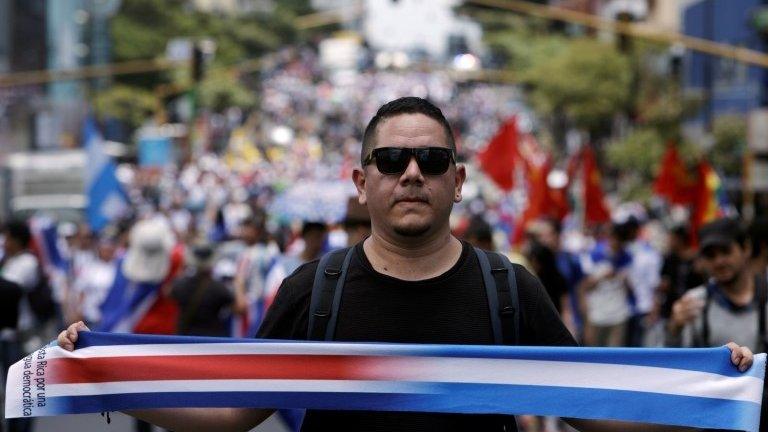
- Published6 August 2018
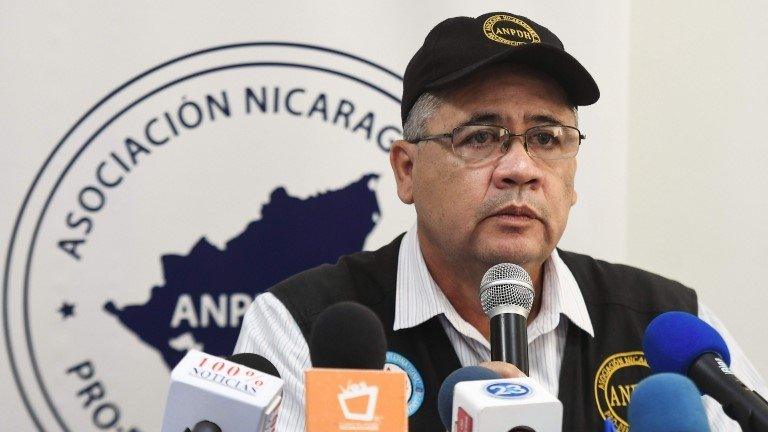
- Published29 July 2018
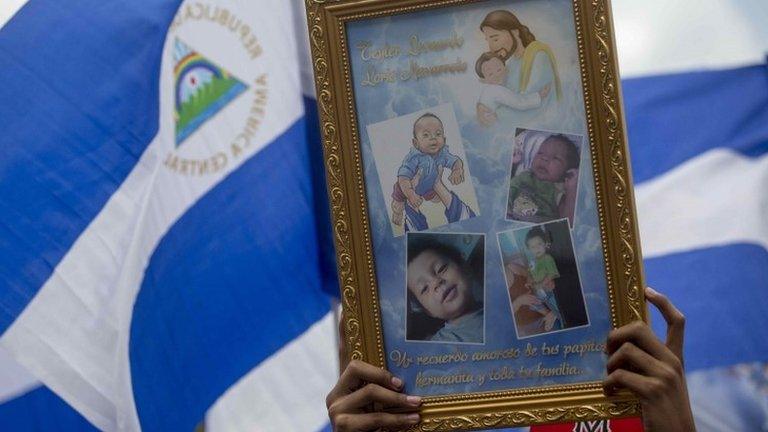
- Published29 May 2018